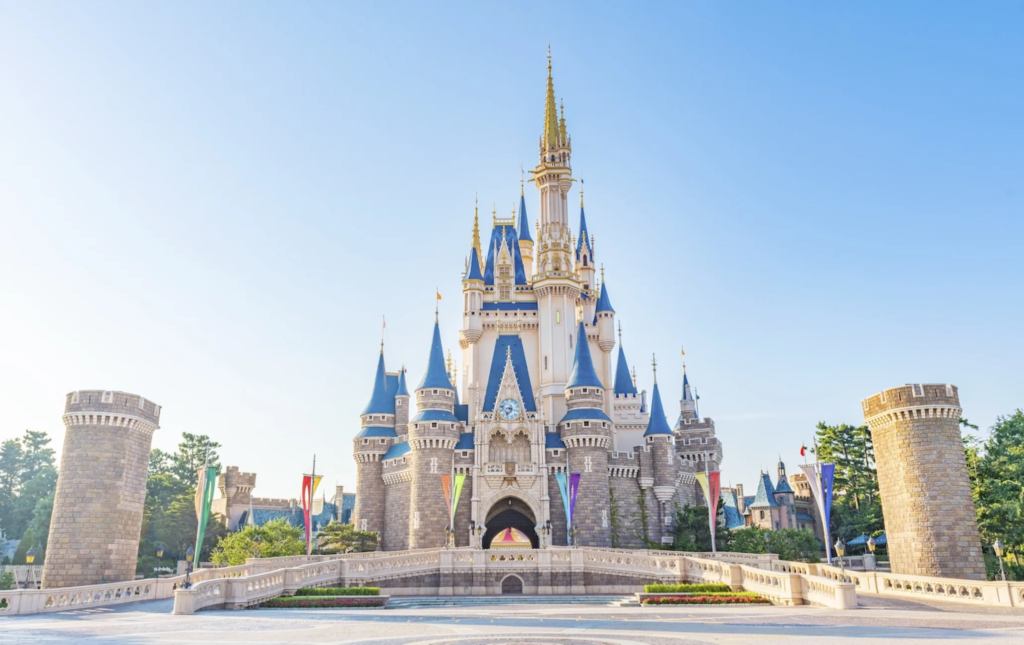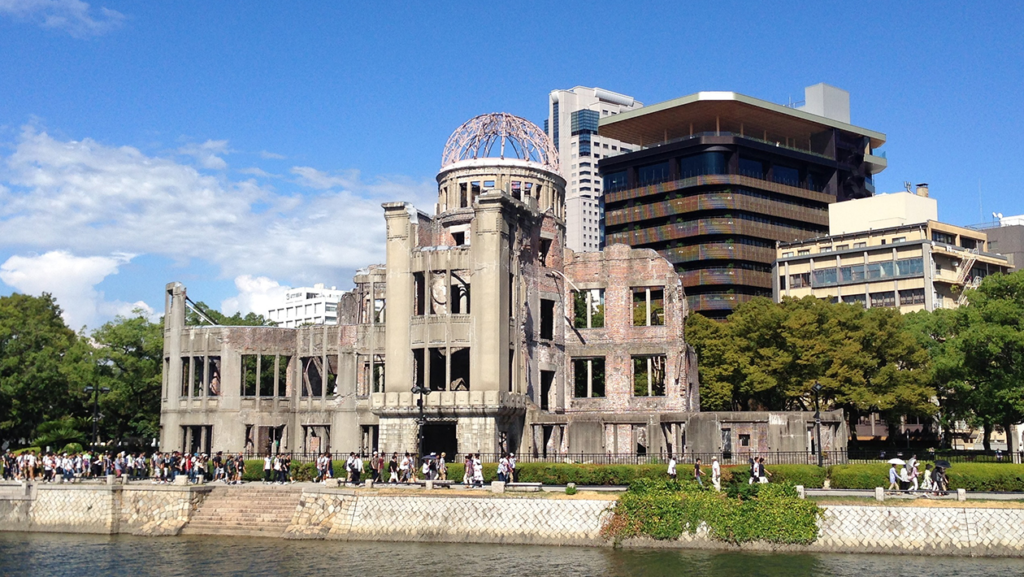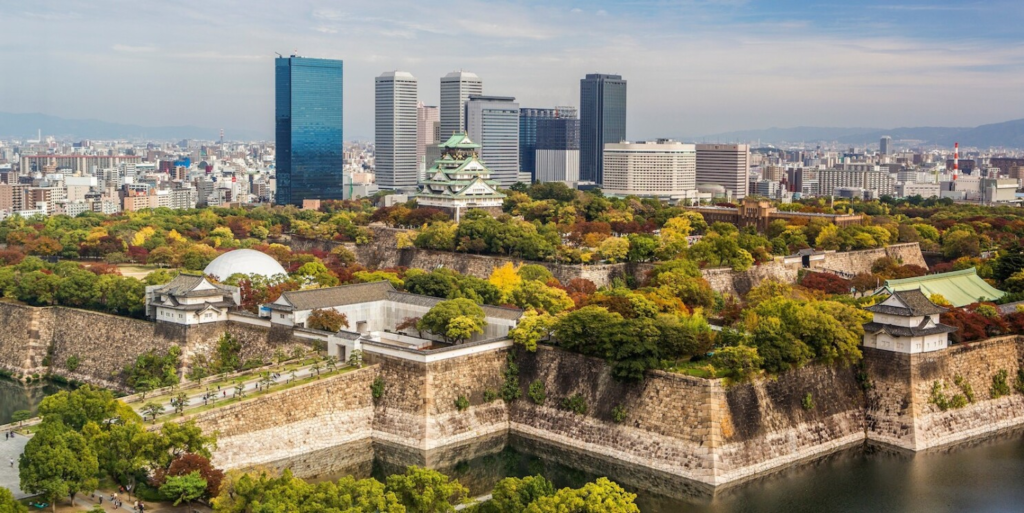Japan, an island nation in East Asia, is a fascinating blend of ancient traditions and modern innovation. Known for its rich history, cultural heritage, and technological advancements, Japan offers a unique experience for every visitor. From bustling metropolises to serene temples and breathtaking natural landscapes, Japan’s allure is undeniable.
Japan’s distinct culture, cuisine, and technological prowess make it a country like no other. Its unique juxtaposition of ancient traditions and cutting-edge technology captivates the world. Visitors to Japan are often struck by the country’s seamless blend of old and new, where centuries-old temples sit alongside towering skyscrapers, and traditional tea ceremonies coexist with high-speed trains.
Table of Contents
Geography
Japan is an archipelago comprising four main islands—Honshu, Hokkaido, Kyushu, and Shikoku—and numerous smaller islands. The country’s diverse landscape includes mountains, forests, and coastal areas. Mount Fuji, an iconic symbol of Japan, stands as the highest peak in the country at 3,776 meters. Japan’s strategic location in the Pacific Ocean makes it prone to natural phenomena such as earthquakes and typhoons.
States of Japan
Japan is divided into 47 prefectures, not states. These prefectures are grouped into eight regions and are the top-level administrative divisions in the country. Each prefecture has its own local government and is further subdivided into cities, towns, and villages. The prefectures are:
| Rank | Prefecture | Capital | Region | Population |
|---|---|---|---|---|
| 1 | Tokyo | Tokyo | Kanto | 14,000,000 |
| 2 | Kanagawa | Yokohama | Kanto | 9,188,000 |
| 3 | Osaka | Osaka | Kansai | 8,800,000 |
| 4 | Aichi | Nagoya | Chubu | 7,552,873 |
| 5 | Chiba | Chiba | Kanto | 6,300,000 |
| 6 | Hyogo | Kobe | Kansai | 5,550,000 |
| 7 | Hokkaido | Sapporo | Hokkaido | 5,300,000 |
| 8 | Fukuoka | Fukuoka | Kyushu | 5,107,000 |
| 9 | Shizuoka | Shizuoka | Chubu | 3,680,000 |
| 10 | Miyagi | Sendai | Tohoku | 2,300,000 |
| 11 | Ibaraki | Mito | Kanto | 2,900,000 |
| 12 | Gifu | Gifu | Chubu | 2,012,000 |
| 13 | Hiroshima | Hiroshima | Chugoku | 2,847,000 |
| 14 | Kumamoto | Kumamoto | Kyushu | 1,800,000 |
| 15 | Okayama | Okayama | Chugoku | 1,900,000 |
| 16 | Nagasaki | Nagasaki | Kyushu | 1,300,000 |
| 17 | Tochigi | Utsunomiya | Kanto | 2,000,000 |
| 18 | Yamagata | Yamagata | Tohoku | 1,090,000 |
| 19 | Yamaguchi | Yamaguchi | Chugoku | 1,400,000 |
| 20 | Ehime | Matsuyama | Shikoku | 1,360,000 |
| 21 | Shiga | Otsu | Kansai | 1,400,000 |
| 22 | Kochi | Kochi | Shikoku | 700,000 |
| 23 | Akita | Akita | Tohoku | 967,000 |
| 24 | Aomori | Aomori | Tohoku | 1,299,000 |
| 25 | Iwate | Morioka | Tohoku | 1,220,000 |
| 26 | Niigata | Niigata | Chubu | 2,300,000 |
| 27 | Ishikawa | Kanazawa | Chubu | 1,155,000 |
| 28 | Fukui | Fukui | Chubu | 790,000 |
| 29 | Tokushima | Tokushima | Shikoku | 800,000 |
| 30 | Nagano | Nagano | Chubu | 2,070,000 |
| 31 | Gumna | Maebashi | Kanto | 1,800,000 |
| 32 | Mie | Tsu | Kansai | 1,200,000 |
| 33 | Yamanashi | Kofu | Chubu | 850,000 |
| 34 | Fukushima | Fukushima | Tohoku | 1,790,000 |
| 35 | Oita | Oita | Kyushu | 1,190,000 |
| 36 | Saga | Saga | Kyushu | 800,000 |
| 37 | Kagawa | Takamatsu | Shikoku | 950,000 |
| 38 | Kagawa | Takamatsu | Shikoku | 950,000 |
| 39 | Mie | Tsu | Kansai | 1,200,000 |
| 40 | Shimane | Matsue | Chugoku | 700,000 |
| 41 | Yamaguchi | Yamaguchi | Chugoku | 1,400,000 |
| 42 | Shimane | Matsue | Chugoku | 700,000 |
| 43 | Oita | Oita | Kyushu | 1,190,000 |
| 44 | Kumamoto | Kumamoto | Kyushu | 1,800,000 |
| 45 | Nagasaki | Nagasaki | Kyushu | 1,300,000 |
| 46 | Kochi | Kochi | Shikoku | 700,000 |
| 47 | Tokushima | Tokushima | Shikoku | 800,000 |
Historical Background
Japan’s history is rich and complex, dating back thousands of years. The earliest known Japanese culture, the Jomon, existed around 14,000 BCE. Over the centuries, Japan saw the rise and fall of various dynasties, samurai rule, and significant cultural developments. The Edo period (1603-1868) marked a time of relative peace and isolation, allowing Japanese culture to flourish. The Meiji Restoration in 1868 opened Japan to the world, leading to rapid modernization and industrialization.
Cultural Heritage
Japan’s cultural heritage is a tapestry of art, music, literature, and traditions. Traditional Japanese arts such as tea ceremonies, flower arranging (ikebana), and calligraphy reflect the country’s aesthetic values and appreciation for simplicity and nature. Japanese literature, from ancient texts like “The Tale of Genji” to contemporary works by authors like Haruki Murakami, offers deep insights into the Japanese psyche and societal changes.
Modern Japan
Modern Japan is a global powerhouse in technology, innovation, and popular culture. Cities like Tokyo and Osaka are known for their futuristic skylines, advanced transportation systems, and vibrant nightlife. Japan’s contributions to technology and innovation are evident in fields such as robotics, automotive engineering, and consumer electronics. Companies like Sony, Toyota, and Nintendo have become household names worldwide.
Top Ten Must-Visit Places in Japan
Japan is a treasure trove of beautiful landscapes, historic landmarks, and cultural marvels. Here are the top ten must-visit destinations in this enchanting country.
1. Tokyo Disneyland – Tokyo

Tokyo Disneyland, located in Urayasu, Chiba, just outside Tokyo, is a magical kingdom filled with enchanting rides, parades, and shows. This world-famous theme park, inspired by the original Disneyland in California, offers an unforgettable experience for visitors of all ages.
2. Fushimi Inari Shrine – Kyoto

Fushimi Inari Shrine, in Kyoto, is one of Japan’s most iconic and photographed locations. Renowned for its thousands of vibrant red torii gates that form a scenic pathway up Mount Inari, this shrine dedicated to the Shinto god of rice is both a spiritual and visual delight.
3. Mount Fuji – Honshu

Mount Fuji, Japan’s tallest mountain, is an iconic symbol located on Honshu Island. Climbing Mount Fuji is a popular activity during the summer months, but the mountain can be admired year-round from locations such as Lake Kawaguchi and Hakone.
4. Arashiyama Bamboo Grove – Kyoto

The Arashiyama Bamboo Grove, situated in the western outskirts of Kyoto, offers a surreal experience as you walk through towering bamboo stalks that sway gently with the wind. This picturesque grove is a favorite spot for both tourists and photographers.
5. Hiroshima Peace Memorial Park – Hiroshima

Hiroshima Peace Memorial Park, located in Hiroshima, is a poignant reminder of the devastating effects of the atomic bomb dropped on the city during World War II. The park includes the Peace Memorial Museum and the Atomic Bomb Dome, a UNESCO World Heritage Site.
6. Osaka Castle – Osaka

Osaka Castle, in the heart of Osaka, is a historical marvel surrounded by beautiful gardens and moats. This iconic structure, originally built in the late 16th century, played a crucial role in Japan’s unification and now serves as a museum showcasing the castle’s history.
7. Nara Park – Nara

Nara Park, located in the city of Nara, is famous for its free-roaming deer and historic temples. Visitors can interact with the friendly deer, believed to be messengers of the gods, and explore Todai-ji Temple, which houses one of Japan’s largest bronze Buddha statues.
8. Himeji Castle – Himeji

Himeji Castle, also known as the “White Heron Castle” due to its elegant white appearance, is located in Himeji City. This well-preserved feudal-era castle is a UNESCO World Heritage Site and is considered one of Japan’s most stunning castles.
9. Shibuya Crossing – Tokyo

Shibuya Crossing, in the bustling Shibuya district of Tokyo, is one of the busiest pedestrian crossings in the world. The iconic sight of hundreds of people crossing the street from all directions at once is a testament to Tokyo’s vibrant energy and fast-paced lifestyle.
10. Jigokudani Monkey Park – Nagano

Jigokudani Monkey Park, located in Nagano Prefecture, offers a unique experience where you can observe wild Japanese macaques, or snow monkeys, bathing in natural hot springs. The park is especially popular in winter when the monkeys’ antics in the steaming pools are a delight to watch.
Japan’s diverse attractions, from historical sites to modern marvels, offer something for every traveler. Whether you seek spiritual enrichment, cultural experiences, or natural beauty, these top ten destinations provide a perfect introduction to the wonders of Japan.
Cuisine
Japanese cuisine, known as washoku, is renowned for its emphasis on seasonal ingredients, presentation, and balance of flavors. Sushi, sashimi, tempura, and ramen are just a few examples of Japan’s diverse culinary offerings. The traditional kaiseki meal, a multi-course dining experience, showcases the artistry and precision of Japanese cooking. Japan’s food culture is not limited to restaurants; street food and convenience store snacks are also popular and offer unique tastes.
Tourist Attractions
Japan boasts numerous tourist attractions that cater to a wide range of interests. Historical sites such as Kyoto’s temples and shrines, Nara’s Great Buddha, and Hiroshima’s Peace Memorial Park offer glimpses into Japan’s past. Nature lovers can explore the scenic beauty of Mount Fuji, the Japanese Alps, and the hot springs of Hakone. For urban explorers, Tokyo’s bustling districts like Shibuya and Shinjuku provide endless entertainment and shopping opportunities.
Festivals and Celebrations
Japanese festivals, known as matsuri, are vibrant celebrations that showcase the country’s cultural heritage. Each region has its own unique festivals, often tied to the seasons or local traditions. The cherry blossom festival, hanami, is celebrated nationwide in spring when cherry trees bloom, drawing crowds to parks for picnics and parties. In summer, the Gion Matsuri in Kyoto and the Nebuta Matsuri in Aomori are famous for their elaborate floats and lively parades.
Traditional and Modern Architecture
Japan’s architectural landscape is a fascinating blend of traditional and modern styles. Traditional Japanese architecture, characterized by wooden structures, sliding doors, and tatami mats, is evident in temples, shrines, and traditional homes. Modern Japanese architecture, influenced by Western styles and innovative design, can be seen in skyscrapers, museums, and commercial buildings. Renowned architects like Kenzo Tange and Tadao Ando have made significant contributions to contemporary architecture.
Technology and Innovation
Japan is synonymous with technological advancements and innovation. The country is a leader in robotics, electronics, and automotive industries. Innovations such as high-speed trains, advanced robotics, and cutting-edge consumer electronics have made Japan a global technology hub. Japan’s commitment to research and development continues to drive its status as a leader in technological innovation.
Transportation
Japan’s transportation system is efficient, reliable, and extensive. The Shinkansen, or bullet train, is renowned for its speed and punctuality, connecting major cities across the country. Japan’s public transportation network includes trains, subways, buses, and ferries, making it easy for residents and visitors to travel. Bicycles are also a popular mode of transportation, especially in smaller cities and rural areas.
Top Eight Most Famous Food Of Japan








Education and Research
Japan places a high value on education and research. The country boasts a number of prestigious universities and research institutions. The education system is rigorous, with a strong emphasis on discipline and academic excellence. Japanese researchers have made significant contributions to various fields, including science, technology, and medicine.
Arts and Entertainment
Japan’s arts and entertainment scene is diverse and dynamic. Traditional performing arts such as kabuki, noh, and bunraku have been preserved and continue to be performed. Contemporary Japanese pop culture, including anime, manga, and J-pop, has gained a global following. Japanese cinema, with directors like Akira Kurosawa and Hayao Miyazaki, has also made a significant impact on the world stage.
Sports and Recreation
Sports play an important role in Japanese culture. Sumo wrestling, Japan’s national sport, has a history that dates back centuries. Baseball is hugely popular, with professional teams and a strong following. Martial arts such as judo, karate, and kendo are also widely practiced. Outdoor activities like hiking, skiing, and hot spring bathing are popular recreational pursuits.
Economy
Japan has one of the largest and most advanced economies in the world. Key industries include automotive, electronics, robotics, and manufacturing. The country is a leading exporter of goods and has a strong presence in global markets. Despite challenges such as an aging population and economic stagnation in recent years, Japan continues to be a major economic power.
Challenges and Future Prospects
Japan faces several challenges, including an aging population, low birth rates, and economic stagnation. The government has implemented various measures to address these issues, such as promoting work-life balance, encouraging immigration, and investing in innovation. Japan’s future prospects are closely tied to its ability to adapt to changing demographics and global economic trends.
Conclusion
Japan is a country of contrasts, where ancient traditions meet modern innovation. Its rich cultural heritage, advanced technology, and natural beauty make it a unique destination. As Japan continues to navigate the challenges of the modern world, its resilience, creativity, and commitment to excellence ensure that it remains a fascinating and dynamic nation.

